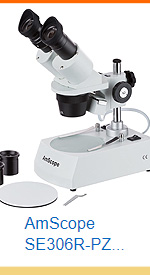LAB GROWN DIAMONDS VS NATURAL DIAMONDS
WHAT'S THE DIFFERENCE BETWEEN MAN-MADE, LAB-GROWN DIAMONDS AND NATURAL?
This post contains affiliate links. If you use these links to buy something I may earn a commission. Thanks! As an Amazon Associate I also earn from qualifying purchases.

Lab-grown diamonds are here. Actually, they’ve been around forever, but for once, they’re no longer taking a backseat.
Mainstream jewelers all across the country have huge marketing campaigns, entire website’s full of merchandise, and inventory that is pushing the industry and increasing demand ten-fold.
Lab-grown is the new trend, and there are some very good reasons why:
- They look just as good as natural
- They are way cheaper
Let’s take a closer look…
Lab-Grown Diamonds:
Lab-grown is exactly what it sounds like, they’re created in a laboratory, man-made.
And there are 2 main processes for lab-grown diamonds:
Chemical Vapor Deposition (CVD):
Diamonds created using CVD start with a real slice of diamond which is placed into a sealed chamber. They fill this chamber with hydrocarbon gases and ionize them into plasma using lasers and microwaves. The gases are broken down and pure carbon adheres to the diamond seeds (sort of like a snowflake forming). High pressure or high temperature is not needed. They growth is natural.
High Pressure High Temperature (HPHT) manufacturing:
The HPHT process is more like a pressure cooker. Pure carbon and pieces of diamond are used as a starter seed, placed into a high pressure, high temperature chamber. This carbon in heated, and melts around the seeds forming a diamond. The HPHT process makes it possible to manufacture large diamonds, larger than any CVD process.
Both of these processes create a diamond as real as any diamond could be. In fact, they are identical.
If you compare the chemical composition and DNA of a diamond, to a lab-grown, you’ll find no difference. This is because lab-grown diamonds are not synthetic, or replicas, or simulants. They are the real deal. Grown from real diamond crystals, just like Mother Nature (which uses carbon, heat and pressure).
It’s almost like a test-tube baby. They produce identical results. Would you ever know if a person was created naturally, or started in a bottle? No way.
Diamonds are the same way.
If you compare a natural diamond (and you can’t say “real“, because lab-grown is real), you’ll never see a difference. The appearance of a natural and lab-grown is the same. They are graded the same. The color and clarity and cuts are the same… Polish, symmetry, fluorescence is the same…
And right now, as lab-grown builds momentum, there are only 3 main ways to tell them apart:
- Inscriptions
- Price
- GIA technology
Lab-grown diamonds have to be inscribed with the manufacturing process on the side of the girdle (grab a loupe and look for yourself). GIA can distinguish the difference between lab-grown and natural by the way the carbon forms (natural grows with octahedral; eight equilateral triangular crystal faces, versus lab-grown is cubic; six equivalent square crystal faces).
But the biggest factor…
Price:
Compare identical diamonds; lab-grown vs natural diamonds in price.

| CARAT, CLARITY, COLOR, CUT, POL, SYM, FLUOR | PRICE | VIEW |
| 1.04, VS1, E, EX, EX, EX, NONE | $2,540 | VIEW |
| 1.00, VS1, E, EX, EX, EX, NONE | $7,220 | VIEW |
Both of these diamonds are identical in every way; VS1, E (my favorite quality combo), but the price difference is outstanding (and they just sold the natural diamond this morning). You would have saved $4,600 on the lab-grown. Crazy, especially since side by side you can’t tell the difference between them.
So why wouldn’t everyone want a lab grown diamond?
Because some people feel that if it isn’t nature made, it’s not real. Many frown upon lab-created, like they are fake, replicas, knock-offs or synthetics (like CZ’s). But this is farthest from the truth. They are real. They look real. Fell real. Test real. But are way cheaper.
The only difference is your thinking.
Really, if you could get a 1 carat, VS1, E, with triple excellent cut grades, for $2,500… you’d probably consider it.

| CARAT, CLARITY, COLOR, CUT, POL, SYM, FLUOR | PRICE | VIEW |
| 1.04, VS1, E, EX, EX, EX, NONE | $2,540 | VIEW |
And today, every jeweler is adopting lab-grown as part of their regular inventory. Just like heat-treated, color enhanced diamonds, they are becoming the norm.
Lab-grown is here to stay.
And so I say, why not take advantage of the low price while you can. They’re so much cheaper than rare natural. Set these stones into a pave mounting or a halo mounting, and you’ll have yourself one beautiful engagement ring.
Yes, these diamonds will last you a lifetime. No, your fiancee will never know it’s man-made, unless you tell her, or the jeweler inspects the girdle inscription and says something. After all, these diamonds are just as durable, just as brilliant, and have just as much sparkle and fire.
But the real beauty is in the savings.
Would you check out lab-grown diamonds as an alternative, or are you solely stuck on natural.
Just note, we’ve been buying lab-grown pearls for almost 100 years now (called cultured). And that doesn’t stop us from buying them.
Diamonds are very rare, and expensive (especially in larger sizes)… And lab-grown is a way to have your cake and eat it too. You reap the rewards, and still get a huge diamond for half the price.
Sounds like a win-win in my book.
Get yourself a 1 carat, 2 carat, 3… And save tons of money.
Check out these lab-grown diamonds here at James Allen.
And let me know what you think about man-made in the comments below.
Cheers! :)


















Leave a comment